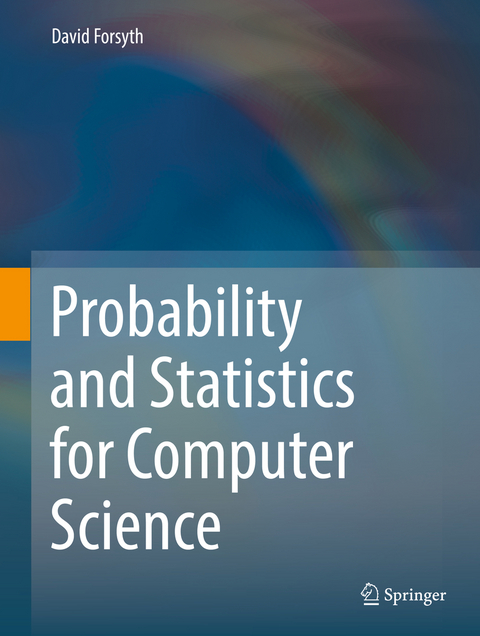
Probability and Statistics for Computer Science
Springer International Publishing (Verlag)
978-3-319-64409-7 (ISBN)
This textbook is aimed at computer science undergraduates late in sophomore or early in junior year, supplying a comprehensive background in qualitative and quantitative data analysis, probability, random variables, and statistical methods, including machine learning.
With careful treatment of topics that fill the curricular needs for the course, Probability and Statistics for Computer Science features:
- A treatment of random variables and expectations dealing primarily with the discrete case.
- Achapter dealing with classification, explaining why it's useful; how to train SVM classifiers with stochastic gradient descent; and how to use implementations of more advanced methods such as random forests and nearest neighbors.
- A chapter dealing with regression, explaining how to set up, use and understand linear regression and nearest neighbors regression in practical problems.- A chapter dealing with principal components analysis, developing intuition carefully, and including numerous practical examples. There is a brief description of multivariate scaling via principal coordinate analysis.
- A chapter dealing with clustering via agglomerative methods and k-means, showing how to build vector quantized features for complex signals.
Illustrated throughout, each main chapter includes many worked examples and other pedagogical elements such as
boxed Procedures, Definitions, Useful Facts, and Remember This (short tips). Problems and Programming Exercises are at the end of each chapter, with a summary of what the reader should know. Instructor resources include a full set of model solutions for all problems, and an Instructor's Manual with accompanying presentation slides.David Alexander Forsyth is Fulton Watson Copp Chair in Computer Science at the University of Illinois at Urbana-Champaign, where he is a leading researcher in computer vision. Professor Forsyth has regularly served as a program or general chair for the top conferences in computer vision, and has just finished a second term as Editor-in-Chief for IEEE Transactions on Pattern Analysis and Machine Intelligence.
1 Notation and conventions.- 2 First Tools for Looking at Data.- 3 Looking at Relationships.- 4 Basic ideas in probability.- 5 Random Variables and Expectations.- 6 Useful Probability Distributions.- 7 Samples and Populations.- 8 The Significance of Evidence.- 9 Experiments.- 10 Inferring Probability Models from Data.- 11 Extracting Important Relationships in High Dimensions.- 12 Learning to Classify.- 13 Clustering: Models of High Dimensional Data.- 14 Regression.- 15 Markov Chains and Hidden Markov Models.- 16 Resources.
| Erscheinungsdatum | 12.01.2018 |
|---|---|
| Zusatzinfo | XXIV, 367 p. 124 illus., 84 illus. in color. |
| Verlagsort | Cham |
| Sprache | englisch |
| Maße | 210 x 279 mm |
| Gewicht | 1134 g |
| Themenwelt | Informatik ► Grafik / Design ► Digitale Bildverarbeitung |
| Mathematik / Informatik ► Informatik ► Theorie / Studium | |
| Mathematik / Informatik ► Mathematik ► Computerprogramme / Computeralgebra | |
| Mathematik / Informatik ► Mathematik ► Wahrscheinlichkeit / Kombinatorik | |
| Schlagworte | 3D graphics & modelling • 3D graphics & modelling • Boxplots • Clustering • Computer Science • Conditional probability • confidence intervals • continuous distributions • DataSets • discrete distributions • Expected values • markov chains • Mathematical & statistical software • Mathematical & statistical software • Maths for computer scientists • Probability and Statistics in Computer Science • random variables • Regression • Significance of evidence • Simulation and modeling • Spatial Data • Statistics and Computing/Statistics Programs • Summarizing 1D data |
| ISBN-10 | 3-319-64409-2 / 3319644092 |
| ISBN-13 | 978-3-319-64409-7 / 9783319644097 |
| Zustand | Neuware |
| Haben Sie eine Frage zum Produkt? |
aus dem Bereich


